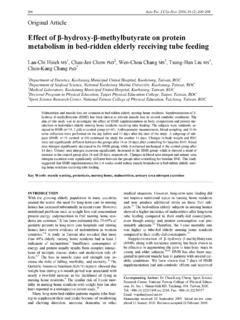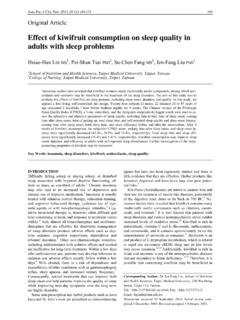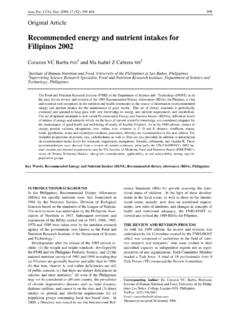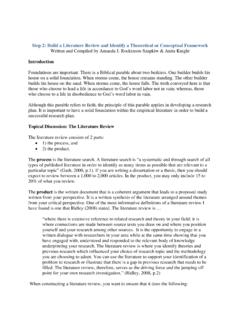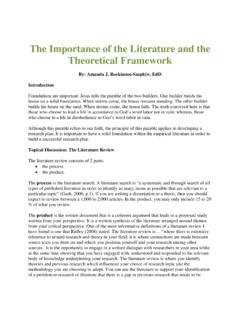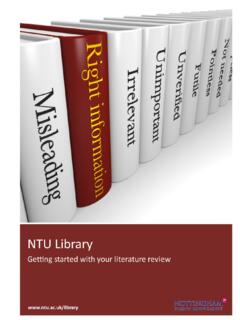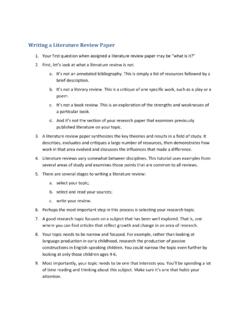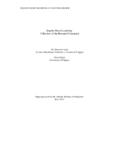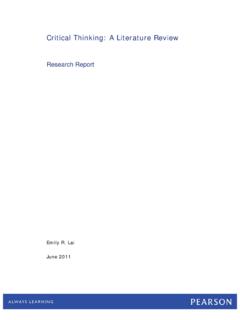Transcription of Nutritional screening in community-dwelling older adults ...
1 440 Asia Pac J Clin Nutr 2010;19 (3):440-449 Review Nutritional screening in community-dwelling older adults : a systematic literature review Megan B Phillips BNutrDiet(Hons), Amanda L Foley PhD, Robert Barnard MEd, Elisabeth A Isenring PhD, Michelle D Miller PhD Flinders University, Adelaide, South Australia Nutrition screening is a process used to quickly identify those who may be at risk of malnutrition so that a full nutrition assessment and appropriate nutrition intervention can be provided. While many nutrition screening tools have been developed, few have been evaluated for use in older adults in the community setting.
2 The aim of this paper is to determine the most appropriate nutrition screening tool/s, in terms of validity and reliability, for identifying malnutrition risk in older adults living in the community. Electronic databases MEDLINE, PUBMED, CINAHL and the Cochrane Library were searched for nutrition screening tools to identify malnutrition or under-nutrition for adults greater than 65 years living in the community. Ten screening tools were found for use in community-dwelling older adults and subjected to validity and/or reliability testing: Mini Nutritional Assess-ment-Short Form (MNA-SF), Malnutrition Universal screening Tool (MUST), Nutrition screening Initiative (NSI), which includes the DETERMINE Checklist and Level I and II Screen, Australian Nutritional screening Initiative (ANSI), Seniors in the Community.
3 Risk Evaluation for Eating and Nutrition (SCREEN I and SCREEN II), Short Nutritional Assessment Questionnaire (SNAQ ), Simplified Nutritional Appetite Question-naire (SNAQ), and two unnamed tools. MNA-SF appears to be the most appropriate nutrition screening tool for use in community-dwelling older adults although MUST and SCREEN II also have evidence to support their use. Further research into the acceptability of screening tools focusing on the outcomes of nutrition screening and ap-propriate nutrition intervention are required. Key Words: malnutrition, under-nutrition, screening tools, validity, reliability INTRODUCTION Nutritional well-being is a fundamental component of the health, independence and quality of life in older ,2 Malnutrition, which in this review refers solely to protein-energy under-nutrition, can lead to undesirable health risks, including loss of independence,3,4 longer length of hospital stay, poorer function and quality of life, readmission to hospital and discharge to higher level care,5 increased risk of fragility fractures and mortality.
4 6 as well as delayed wound healing and slower recovery from ,8 Even when older adults are living independently, changes in appetite, limited mobility, social isolation and economic constraints, often combined with the presence of chronic diseases and use of many medications, can all adversely affect Nutritional ,10 Hence the need to identify those at risk of malnutrition is critical in provid-ing optimal care and promoting good Nutritional status in community-dwelling older Malnutrition is a major international and Australian health problem (prevalence of 25-50% in the acute setting)
5 Which continues to be unrecognised and However, there are limited data on the prevalence of mal-nutrition and malnutrition risk in Australian community-dwelling older The prevalence of malnutrition from overseas studies has been reported as 2-10%, using the Mini Nutritional Assessment (MNA).14 A recent Aus-tralian study by Visvanathan et al15 in 250 older adults receiving domiciliary care services found a malnutrition prevalence of , with approximately 40% at Nutritional risk according to the MNA. Malnutrition prevalence in the community has been reported to vary from 10-30%.
6 12 This highlights the significance of malnutrition, although more extensive research in Australia, particularly in the community-dwelling population, needs to be carried out to further appreciate the extent of the problem. As a process of identifying characteristics known to be associated with Nutritional problems, Nutritional screening tools have been developed to recognise individuals who are malnourished or at Nutritional For a Nutritional screening tool to be effective the tool must be easy to interpret, quick and easy to administer, be acceptable to the client, and A nutrition screening tool should be reliable and therefore consistent in its meas-urement of Nutritional Any screening tool should Corresponding Author.
7 Dr Michelle Miller, Flinders Univer-sity Nutrition and Dietetics, Room 7E , Level 7 Flinders Medical Centre, Flinders Drive, Bedford Park, South Australia 5042. Tel: 61 8 82045328; Fax: 61 8 82046406 Email: Manuscript received 11 February 2010. Initial review completed 22 March 2010. Revision accepted 20 April 2010. MB Phillips, AL Foley, R Barnard, EA Isenring and MD Miller 441 also be tested for validity, or the extent to which a tool measures what it is intended to measure. Criterion valid-ity refers to the Nutritional screening tool performing well when compared with some other measure of Nutritional The Nutritional screening tool should be valid with respect to age, gender and ethnicity, as well as par-ticular settings, due to differences in Nutritional concerns and To determine the validity.
8 It is important to consider the sensitivity and specificity of Nutritional screening tools to identify the accuracy of the classification of the results of the Sensitivity can be defined as the ability of the tool to identify those who are malnourished or at risk of malnutrition and therefore is a true positive, and specificity as its ability to detect patients who are not malnourished or at risk of malnutrition and therefore is a true negative A wide range of Nutritional screening tools have been developed in various settings, however the validity and effectiveness of these tools, and the methods by which they were developed are not always reported or evaluated.
9 Green, Watson20 conducted a literature review on nutri-tional screening and assessment tools from the period of 1985 to 2002 and found 21 tools for use in older adults , although many were not tested for validity and/or reliabil-ity. However additional screening tools have been devel-oped and used since this review was conducted. Likewise, Watterson et conducted a review of screening tools and identified five valid screening tools for use in the community setting. However this review only included screening tools based on recommendations from Jones18 and any tool with level III-2 evidence or higher published after the year 2000 to support its use.
10 Hence this may not be an extensive summary of all valid and reliable tools for use in the community setting. Therefore the aim of this review is to identify appropriate nutrition screening tool/s in terms of validity and reliability for use in older com-munity-dwelling adults . MATERIALS AND METHODS The criteria for selecting articles were: y screening tools for identifying malnutrition risk is described. y The development and validation of the Nutritional screening tool is described. y Nutritional screening tools that use more than one item for assessing Nutritional risk.

